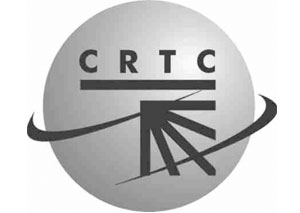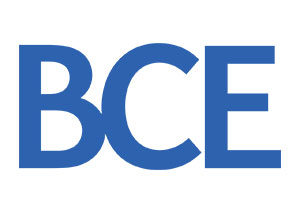TekSavvy Solutions Inc. has issued a letter to the CRTC calling for greater transparency and disclosure regarding the 2018 Communications Monitoring Report, published in December. The independent telco, which has offices in Chatham, ON and Gatineau, PQ, says without explanation, the 2018 Communications Monitoring Report broke with past standards and omitted data highly relevant to CRTC proceedings. TekSavvy says the 2018 report did not follow standard practices which the CRTC has applied in past reports. TekSavvy is asking the commission to explain the changes. It also wants an amendment to the report presenting the omitted data.
 The CRTC has established a so-called “jitter metric” determining that to define fixed broadband internet serve as “high-quality,” it must meet, among other things, a jitter threshold of five milliseconds. Fixed broadband internet access service is defined as a high-quality service if it provides the subscriber with a smooth experience when using real-time QoS-critical applications. A high level of jitter can cause visible and audible effects, like video pixilation, sound distortion, or delays in loading web pages.
The CRTC has established a so-called “jitter metric” determining that to define fixed broadband internet serve as “high-quality,” it must meet, among other things, a jitter threshold of five milliseconds. Fixed broadband internet access service is defined as a high-quality service if it provides the subscriber with a smooth experience when using real-time QoS-critical applications. A high level of jitter can cause visible and audible effects, like video pixilation, sound distortion, or delays in loading web pages.
 BCE Inc. has reported 2018 Q4 and full-year results, with operating revenue up 3.0% in Q4 to $6,215 million, driven by a 1.5% increase in service revenue to $5,231 million that reflected year-over-year growth for all Bell operating segments. Product revenue increased 11.3% to $984 million, the result of a higher sales mix of premium smartphones and stronger data equipment sales to large business customers. For full year 2018, BCE operating revenue increased to $23,468 million, up 3.1% over 2017. Wireline revenue growth accelerated to 2.4% – its best organic quarterly result in more than 10 years. Postpaid and prepaid net additions totalled 143,000 in Q4, generating 4.6% revenue growth and 5.1% higher adjusted EBITDA. Bell Media financials saw revenue up 1.9% and adjusted EBITDA up 2.9% in Q4 on stronger TV advertising demand and cost management. Media operating revenue grew 1.9% in Q4 to $850 million, due to ad revenue growth in entertainment and sports specialty TV, conventional TV, outdoor advertising and digital media. Subscriber revenue was essentially flat compared to Q4 2017. Media adjusted EBITDA increased 2.9% to $176 million as higher revenue more than offset operating cost growth of 1.7%, which was driven mainly by the higher cost for sports broadcast rights and ongoing Crave programming expansion.
BCE Inc. has reported 2018 Q4 and full-year results, with operating revenue up 3.0% in Q4 to $6,215 million, driven by a 1.5% increase in service revenue to $5,231 million that reflected year-over-year growth for all Bell operating segments. Product revenue increased 11.3% to $984 million, the result of a higher sales mix of premium smartphones and stronger data equipment sales to large business customers. For full year 2018, BCE operating revenue increased to $23,468 million, up 3.1% over 2017. Wireline revenue growth accelerated to 2.4% – its best organic quarterly result in more than 10 years. Postpaid and prepaid net additions totalled 143,000 in Q4, generating 4.6% revenue growth and 5.1% higher adjusted EBITDA. Bell Media financials saw revenue up 1.9% and adjusted EBITDA up 2.9% in Q4 on stronger TV advertising demand and cost management. Media operating revenue grew 1.9% in Q4 to $850 million, due to ad revenue growth in entertainment and sports specialty TV, conventional TV, outdoor advertising and digital media. Subscriber revenue was essentially flat compared to Q4 2017. Media adjusted EBITDA increased 2.9% to $176 million as higher revenue more than offset operating cost growth of 1.7%, which was driven mainly by the higher cost for sports broadcast rights and ongoing Crave programming expansion.
 The Media Technology Monitor’s (MTM) newest report series Technology Through The Ages looks at how Anglophone Canadians engage with media. MTM says Generation Xers – those aged 38 to 51 – are most likely to stream AM/FM radio. Other highlights from the Generation reports include the finding that in a typical week, Millennials (18-37) invest more time overall online than any other age group; Generation X spend most of their media consumption time online, but when it comes to TV viewing they still lean toward traditional television. MTM says Seniors (73+), on average, report spending twice the amount of time watching TV on a TV set that younger Anglophones, with 91 per cent of Seniors still subscribed to either a cable, satellite, or fibre optic service.
The Media Technology Monitor’s (MTM) newest report series Technology Through The Ages looks at how Anglophone Canadians engage with media. MTM says Generation Xers – those aged 38 to 51 – are most likely to stream AM/FM radio. Other highlights from the Generation reports include the finding that in a typical week, Millennials (18-37) invest more time overall online than any other age group; Generation X spend most of their media consumption time online, but when it comes to TV viewing they still lean toward traditional television. MTM says Seniors (73+), on average, report spending twice the amount of time watching TV on a TV set that younger Anglophones, with 91 per cent of Seniors still subscribed to either a cable, satellite, or fibre optic service.



